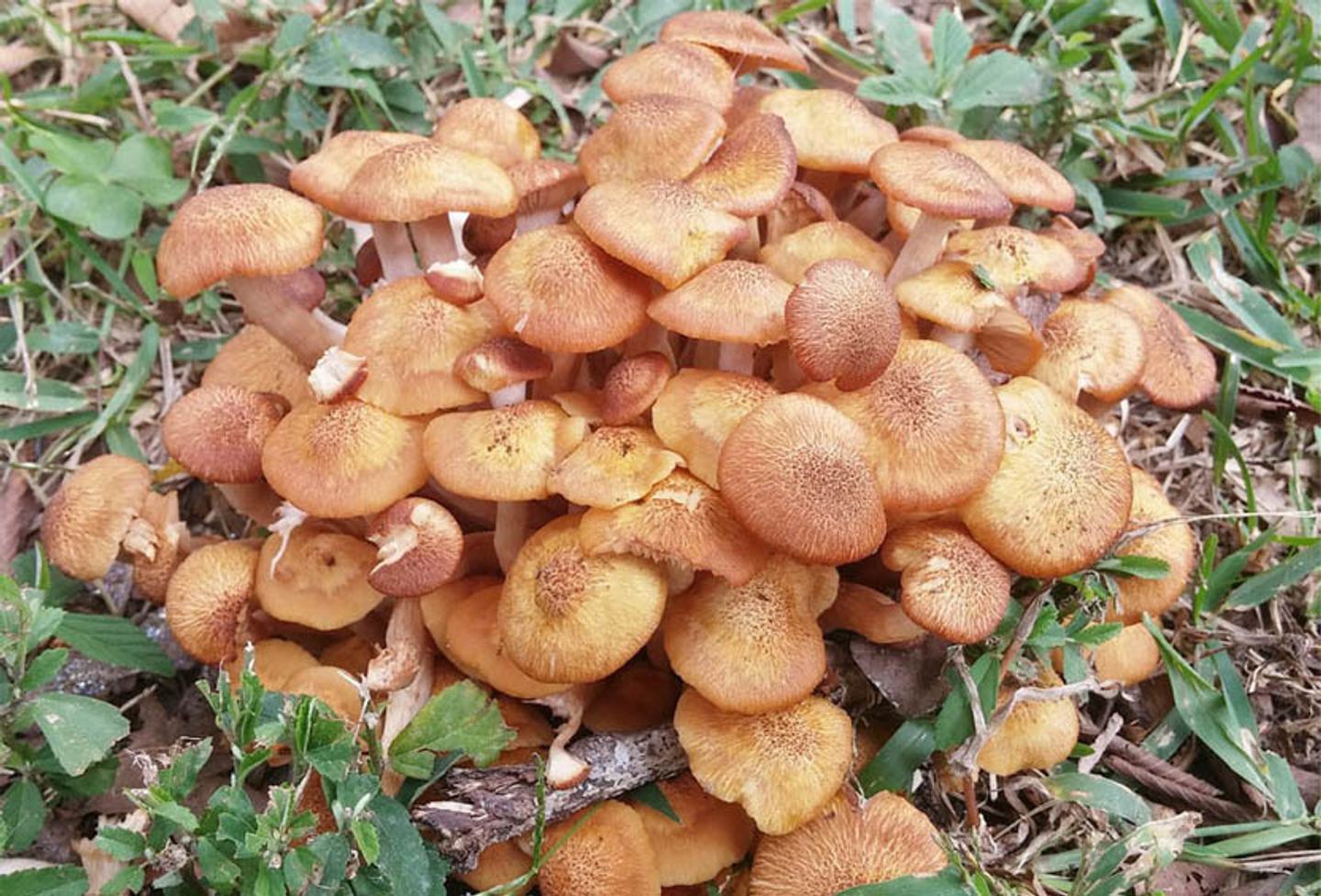Guides
Soil-borne diseases: honey fungus
You might think that the largest living thing on earth is either some sort of whale or even a giant tree. However, you'd be wrong. The largest living thing on earth is, in fact, a form of honey fungus. Quite amazing, yes, but to any gardener in the know, these two words send a chill down the spine.

In the Oregon woodland where that particular record-breaking fungus is spreading under the soil, many of the trees in the 10 square kilometres above have died as a result. That's because honey fungus (which refers to several species of Armillaria) is a killer of woody plants, and can spread at a rate of a metre per year.
It's not the toadstools, which grow above ground, which do the damage. They're just the fruiting bodies of the organism. The doom-mongerer is the mycelium - long strands connected to those toadstools, that run rampant through the soil and inside a range of trees, shrubs and perennials, interfering with their life processes. Infection can eventually spell their end.
Symptoms
Symptoms of honey fungus include pale leaves, dieback, early autumn colour and a cracking, bleeding trunk. However, these can also be symptoms of much less serious problems - for example, Japanese maples often exhibit a bit of dieback as a natural part of their development and early autumn colour can be weather related.
Telltale signs that symptoms are caused by honey fungus are clusters of yellow-brown toadstools at ground level in autumn, and a thin layer of white fungal growth underneath on the wood of infected trees, which you can see if you peel away some bark. This is the mycelium. It usually smells mushroomy.
You may also see bootlace-like growths coming from the roots of infected plants, or flattened laces under the bark. These are rhizomorphs, which allow the fungus to spread from plant to plant. As soon as they hit the roots of another plant, they attack and penetrate them, and thus their trail of destruction continues! These are not always easy to detect, however, so finding mycelium is more telling.
Control
There is no chemical available to treat honey fungus. The only ways to deal with it are to:
remove and destroy infected roots and stumps
impede the spread of rhizomorphs with a suitable barrier
stick to plants that are less susceptible
Stopping the spread
If you've identified honey fungus, dig up the affected plants, noting their position. Get rid of as much of the root system as possible. Don't put this material on your compost heap; burn it.
It may be worth installing a barrier between the affected area of soil and the rest of your garden, especially if several otherwise healthy plants have been affected, indicating an aggressive species is at work. Rubber pond liner or thick plastic sheeting can be used, buried vertically to about 50cm in depth, leaving a couple of cm above the soil. You can either encircle the affected area, or protect precious plants by enclosing them, instead.
Digging soil regularly also breaks up the rhizomorphs, slowing their spread. Leaving affected areas with no plants for about 6 months to a year should also starve the fungus.
Resistant trees and shrubs
Unfortunately, many trees and shrubs commonly planted in the UK are very susceptible to honey fungus, including most maples, birch, cherries, roses, privet and viburnum.
According to the RHS, less affected trees and shrubs include:
Abelia
Acer negundo (box elder)
Alnus (alder)
Aronia
Azara
Bambusa and other bamboos
Buxus sempervirens (box)
Callicarpa
Carpinus betulus (hornbeam)
Catalpa (Indian bean tree)
Chaenomeles (flowering quince)
Clerodendrum
Cryptomeria (Japanese cedar)
Cydonia (medlar)
Davidia involucrata (handkerchief tree)
Ficus (fig)
Garrya elliptica
Ginkgo biloba
Gleditsia (honey locust)
Griselinia littoralis - a good choice for a resistant hedge
Halesia
Hippophae rhamnoides (sea buckthorn)
Juglans nigra (black walnut)
Leycesteria formosa (pheasant berry)
Morus (mulberry)
Myrtus
Nandina
Nyssa sylvatica - great for autumn colour
Parrotia persica (Persian ironwood) - great for autumn colour
Platanus (plane)
Pseudotsuga menziesii (Douglas fir)
Quercus ilex (holm oak)
Rhamnus cathartica (purging buckthorn)
Rhamnus frangula (alder buckthorn)
Sarcococca
Taxodium distichum (swamp cypress)
Zelkova serrata (keaki)
Finally
To give newly planted trees and shrubs the best chance of resisting disease, including honey fungus, follow our planting instructions and aftercare guide.